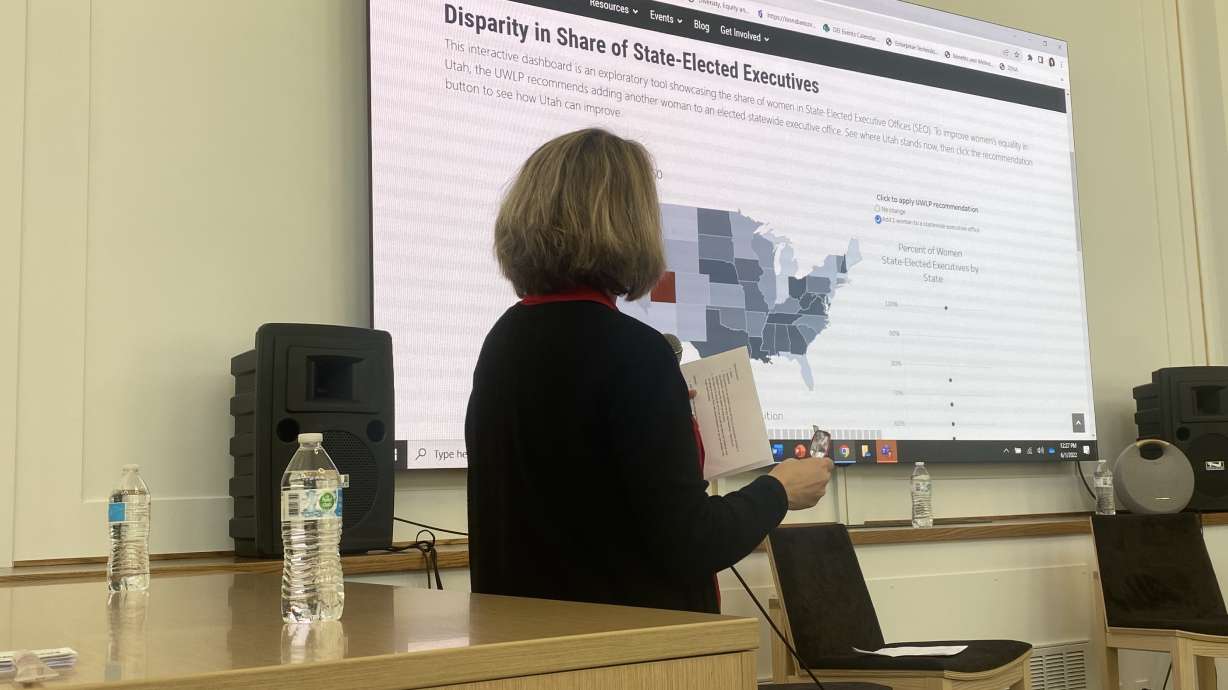Estimated read time: 4-5 minutes
This archived news story is available only for your personal, non-commercial use. Information in the story may be outdated or superseded by additional information. Reading or replaying the story in its archived form does not constitute a republication of the story.
SALT LAKE CITY — More research needs to be done in Utah into how to reduce the state's high rates of sexual violence and better support survivors, according to a new report by the Utah Women and Leadership Project.
The report, released Wednesday by the Utah State University-led initiative, revealed statistics on the prevalence of sexual violence in the state, victim demographics and vulnerabilities, along with prosecution rates and the percentage of sexual assault kits that are submitted to the state crime lab for analysis.
Utah ranks ninth among states with the highest amount of rapes per capita, the only violent crime in the state to rank higher than the national average.
The report follows one released by the nonprofit in 2016, which explored campus sexual violence and the cost of sexual violence across the state.
How common is sexual violence in Utah?
One in 3 Utah women have been sexually assaulted and 1 in 6 women report being raped, according to a Utah Commission on Criminal and Juvenile Justice survey.
Utah has had little success in lowering its rates of sexual violence, with its rates of rapes ranking higher than the national average for over 25 years.
Currently, Utah has a rate of 55.5 rapes per 100,000 people, compared to the national rate of 42.6 per 100,000 people, according to FBI's Uniform Crime Reporting database.
The prevalence extends beyond the reported incidents, the report noted; only 11.8% of Utah women who were raped or assaulted reported the sexual violence to law enforcement.
Which demographics are most 'vulnerable'?
Data collected by Utah researchers, four forensic nurse teams and the Utah Department of Public Safety Bureau of Forensic Services since 2010 revealed victim demographics and vulnerabilities across eight Utah counties.
The researchers and report noted that the variables gathered were to be seen "as vulnerabilities rather than as risk factors to emphasize that individuals are not to be blamed for being sexually assaulted. Rather, they are victimized due to their personal or situational vulnerabilities."
The data revealed that young women — although women of all ages were represented — were the most vulnerable to sexual assault. Approximately 4.7% of victims were men and 94.7% were women, according to the study.
Adjusting for census data and sexual assault victims' race, Black and Native American individuals have a higher vulnerability of being sexually assaulted in Utah.
Other vulnerabilities observed in the data included that 47.2% of people with mental illness in Utah have been assaulted, compared to a 20% rate nationally.
Who, where and how?
The data collected indicated that 76.6% of sexual assault victims knew their assailant and categorized the relationship as "acquaintance," 18.5% report being raped by a "stranger" and 4.8% of the cases reported not knowing the assailant due to loss of consciousness, which is often associated with drug-facilitated assaults.
Overall, "almost half of victims (49.0%) reported loss of consciousness or awareness during sexual assaults due to a range of causes: strangulation, suspected drug-facilitated assaults (16.2%), head injuries, alcohol (40.7%) and/or drug intoxication (16.1%), and psychological trauma from the assault," the report noted.
Rapes by a current spouse or partner occured in 6.9% of cases, with ex-partners — predominantly ex-boyfriends — at 5.7%.
The location of the assault predominantly included a house or apartment at 62.6%.
Assailants' actions against the victims during sex assaults included being grabbed or held (61%), verbally threatened or coerced (37%), hit (16%), strangled (15%), weapon use (9.9%), restraints used (5.1%), or burned (1.5%). Cases of strangulation associated with sexual assault rose from 5% from initial data collected in 2010. Victims who previously experienced a nonfatal strangulation are six times more likely to be victims of attempted homicide and seven times more likely to die by homicide, making the increase a point of significant concern.
Sexual assault kits and prosecution rates
In 2016, the report's authored published a study revealing that only 38% of sexual assault kits had been submitted to the state crime lab for analysis — a statistic that prompted the sponsoring and passing of HB200: Sexual Assault Kit Processing by state Rep. Angela Romero, which mandated the submission and testing of all kits.
Sexual assault kit submission rates have now notably risen to 95%, according to the report. Legislative changes and additional funding, both from the state and federal government, have allowed for the testing of 11,193 backlogged sexual assault kits, resulting in 5,205 DNA profiles being logged into the national database.
Among the county data:
- Salt Lake County prosecution rates improved from 6% to 8%, with an additional 2% of cases not adjudicated; law enforcement referral of adult sexual assault cases remained at approximately 33%.
- Utah County had a reduced screening rate with law enforcement agencies formally screening 27% of cases and informally screening 14.0% of cases with the Utah County Attorney's Office; overall prosecution rates in the county for adult sexual assault cases were higher at 11%.
Recent efforts by legislators include allocating additional funds to shelters or resource centers and passing further protections for victims.
A working group of advocates, elected officials and community stakeholders has been convened as part of the initiatives in the Cox-Henderson administration's One Utah Roadmap to develop a statewide approach.
To read the full report visit Utah Women and Leadership Project's website.










